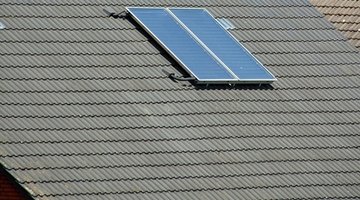How to Use a Diode to Stop Battery Drainage
Diodes are used in electronic circuits to prevent electrical current from flowing in more than one direction. They are also used to push electrical current from one point in the circuit to another, such as is the case in a solar cell charging circuit. When a diode is used as a means to control the direction of current flow, it is referred to as a "blocking" diode. When solar panels are exposed to light, these panels generate electricity and can charge a battery. If a blocking diode is not present, the solar panels can also drain the battery when the solar panels are not exposed to light.

-
Put on the protective eyewear. Cut three pieces of wire, and strip each wire of 1/2 inch of insulation at each end. Using the electrical pliers, attach one end of the first wire to the negative terminal on the battery. Attach the other end of the first wire to the negative terminal on the solar cell assembly.
-
Connect one end of the second wire to the positive battery terminal. Connect the other end of this wire to the cathode lead (which is marked with a line) on the diode, and solder this connection.
-
Connect one end of the third wire to the anode lead on the diode. Solder this connection. Connect the other end of the third wire to the positive terminal on the solar cell assembly.
References
- U. of Hawaii: Solar Power for the Digital Fieldworker; Tom Honeyman and Laura C. Robinson; June 2007
- Electronic Devices; Thomas Floyd; 1996
Tips
- A blocking diode will allow a very small current (less than one milliamp) to flow across it when it is in a reverse-bias state. While the blocking diode does not completely eliminate all current flow through the charging circuit when the solar cells are inactive, it does provide the battery sufficient protection against reverse current flow.
Writer Bio
David Sandoval has served as a trainer and technical writer since 2000. He has written several articles online in the fields of home improvement, finance, electronics and science. Sandoval has an Associate of Applied Science in microelectronics from Northern New Mexico College.
Photo Credits
- Solar hoch auf dem dach image by DevilGB from Fotolia.com
More Articles


